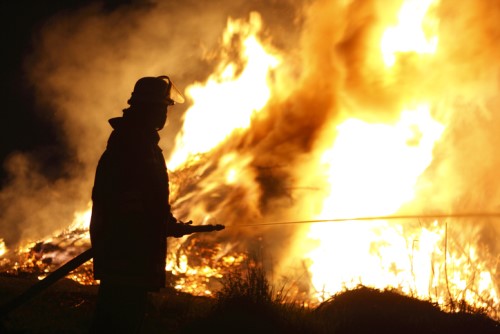

Fire and Emergency New Zealand has declared a restricted fire season for Tāmaki Makaurau Auckland, effective from 6am Thursday until further notice.
The decision comes as the region faces heightened fire risks due to prolonged warm and dry conditions.
Under the restricted fire season, residents must obtain a permit from Fire and Emergency New Zealand before lighting outdoor fires. Applications for fire permits can be made online at checkitsalright.nz.
Te Hiku regional manager Ron Devlin stated that the restrictions cover the Waitematā, Auckland City, and Counties Manukau districts, citing dry vegetation and the potential for fires to spread rapidly.
“While there is some rain forecast next week, this isn’t going to be enough to counter the effects of the recent warm, dry weather,” he said. “We continually monitor the weather conditions throughout the region and keep an eye on how quickly vegetation is drying out.”
He warned that flammable vegetation such as mānuka, kānuka, and grass, as well as forestry areas, are especially prone to ignition and can be difficult to control once a fire starts.
Meanwhile, the Hauraki Gulf Islands remain under a prohibited fire season, which bans all outdoor fires.
Devlin reminded residents to check fire regulations before lighting any fires and follow safety measures outlined on Fire and Emergency New Zealand’s website.
“If you’re thinking about starting a fire, you must go to www.checkitsalright.nz first to find out if you can and what restrictions apply,” he said. “There’s also excellent safety advice, which I strongly urge people to follow, to help us keep Tāmaki Makaurau fire-free this summer.”
The fire restrictions reflect the increasing challenges posed by climate conditions, requiring proactive measures to mitigate fire risks during periods of elevated danger.
New Zealand’s climate continued to warm in 2024, which was ranked as the 10th-hottest year on record, according to the National Institute of Water and Atmospheric Research (NIWA).
The annual average temperature reached 13.25°C, which is 0.51°C higher than the 1991-2020 climate baseline.
This trend aligns with a global rise in temperatures driven by increasing greenhouse gas emissions. Atmospheric carbon dioxide levels monitored at NIWA’s Baring Head station exceeded 420 parts per million, marking a notable increase attributed to human activities.
Annual temperatures across regions such as Northland, Waikato, Hawke’s Bay, and Otago were 0.5°C to 1.2°C above historical averages. However, cooler-than-normal conditions were recorded in March and May, with temperatures dropping by 1.3°C and 1.0°C below their respective monthly averages, making these months notable exceptions to the overall warming trend.
Rainfall patterns in 2024 were highly uneven. While Northland, Bay of Plenty, and parts of eastern Canterbury experienced significantly below-average rainfall – some areas recording their driest year – Southland and Otago reported higher-than-normal rainfall, leading to localized flooding in several areas.
Soil moisture levels varied throughout the year. The early months saw drought-like conditions in regions such as Wairarapa and Taranaki, which later improved by winter. However, dry conditions returned to parts of the North Island towards the end of the year.
On the other hand, Marlborough retained its reputation for sunshine, with Blenheim recording the highest annual sunshine hours in the country – 2,769 hours.
The year’s climate was shaped by weather systems influenced by a weakening El Niño event early in the year. These patterns brought south-westerly winds, contributing to drier conditions in northern and eastern parts of New Zealand.
Extreme weather events included flooding in Westland, Wairoa, and Dunedin, leading to local states of emergency.
Additionally, sea surface temperatures (SSTs) fluctuated throughout the year, with a period of cooler-than-normal SSTs in autumn, followed by above-average SSTs during late summer.
